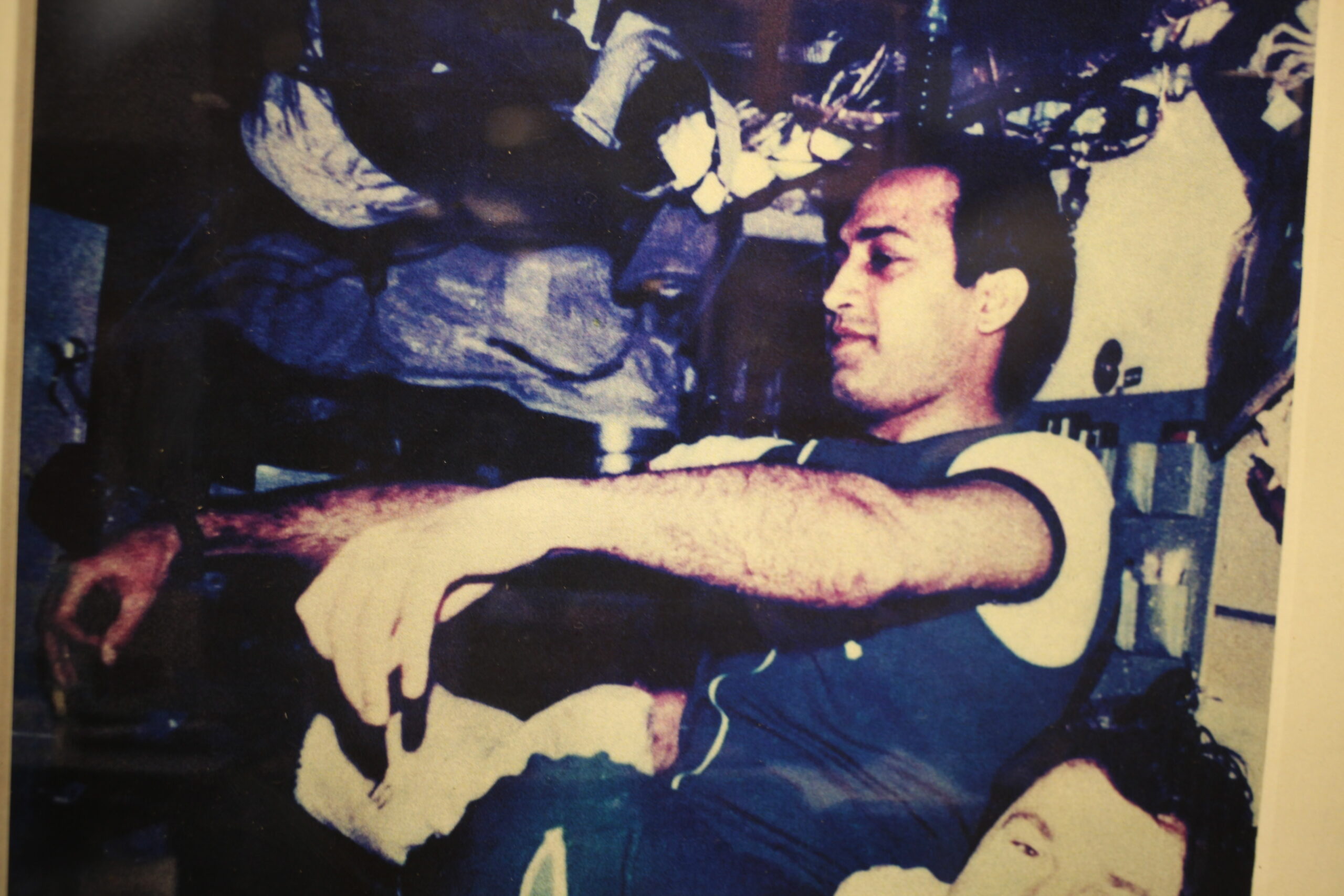Wing Commander Sharma went into space on April 3, 1984.
If you thought practising yoga was tough, try doing it in zero gravity.
Besides being the only person from India to have spent time in the final frontier, Wing Commander Rakesh Sharma also has the distinction of being the first person to practise the ancient Indian discipline in space, making him the first 'Antariksh Yogi'.
More than 40 years after he blasted off into space, Wing Commander Sharma spoke to NDTV's Science Editor Pallava Bagla on using a special harness to do the 'asanas' (yoga positions), the challenges posed by the absence of gravity and how the results of his yoga routine compared with the training regimen followed by Russian cosmonauts who were on the mission with him.
The astronaut said the yoga experiment was included in the mission brief of the Soyuz T-11, the sixth expedition to the Soviet Salyut 7 space station which launched on April 3, 1984, because all spacefaring countries were looking for methods to avoid space sickness.
"And there were various preparation methods... the one which the West followed and the one which the Soviet Union followed at that time. So here was an attempt to find out if the yogic method of preparing space travellers to withstand the rigours of space would offer a different, viable alternative. Both Ravish sir (Ravish Malhotra, his backup on the mission) and I did yoga about three to four months before the launch," he said.
The former Indian Air Force pilot said they had stopped training as per the Russian regimen and the idea was to find out how well prepared they were compared to the cosmonauts in all phases - before the launch, in space and after they came back to Earth.
"It did teach us a few lessons because doing yoga in space means that you are doing it in zero gravity. Whereas on Earth, when you are doing yoga, there is gravity. The tensions are missing in orbit. So, a harness was designed with elastic cords to replicate that gravity. But, then, even balancing yourself is a bit difficult. So, I would say that if a purist had seen us doing yoga, he would have been quite disappointed," Wing Commander Sharma quipped.
The astronaut said a lesson learnt was that if yoga is to be practised in space, a better harness is needed. On the results of the comparison between the yogic preparation and the regimen followed by the Russian cosmonauts at the time, he said he was "none the worse".
"So one can at least say that preparation by the yogic system was not worse than what was being done. But to say that it was better would need a wider sample," he said.
On whether he would recommend the yoga regimen to India's four astronaut designates for the Gaganyaan programme, Wing Commander Sharma said it can happen during subsequent missions.
"I really would leave it to those who are getting the experiments together because time has passed. One thing that has not changed is the physiology of the human being. So, I guess, from that aspect it would remain relevant. But let them decide...I think for the first few flights, it's more important for us to prove the systems and make sure that they are reliable so that we can continue down this path. These experiments can happen at a later stage," he said.






Leave a Reply